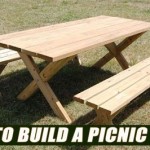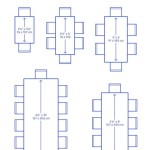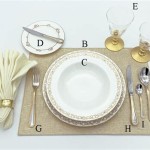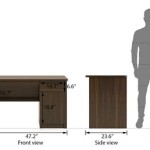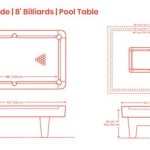` Painting A Metal Patio Table
Metal patio tables, though durable, are susceptible to rust and weathering when exposed to the elements for prolonged periods. Restoring a metal patio table through painting is a cost-effective way to extend its lifespan and refresh its aesthetic appeal. A proper paint job protects the metal from further corrosion and transforms its appearance to complement the surrounding outdoor space. This article details the necessary steps, materials, and considerations for painting a metal patio table, ensuring a professional and long-lasting result.
Preparation: Cleaning and Surface Preparation
Surface preparation is arguably the most critical step in ensuring a successful paint job. Inadequate preparation can lead to poor adhesion, premature chipping, and ultimately, a shorter lifespan for the paint finish. The preparation phase involves thorough cleaning, rust removal, and priming.
The initial step is to clean the table to remove any loose debris, dirt, grease, or existing flaking paint. A mild detergent mixed with warm water is usually sufficient for this purpose. Using a scrub brush or sponge, thoroughly scrub the entire surface of the table. Pay particular attention to areas that are heavily soiled or have accumulated grime. Once cleaned, rinse the table thoroughly with clean water and allow it to dry completely. Ensure no residual soap or detergent remains, as these can interfere with paint adhesion.
After cleaning, the next step is to address any rust present on the metal surface. Rust is a form of corrosion and, if left untreated, will continue to spread beneath the new paint layer, eventually causing the paint to fail. Several methods can be employed to remove rust, each with its own advantages and disadvantages. For light surface rust, a wire brush or sandpaper with a coarse grit (80-120 grit) may be sufficient. Apply firm, even pressure to the affected areas, scrubbing until the rust is removed and the bare metal is exposed. For more extensive rust, a power tool such as a wire wheel attached to a drill or angle grinder can be used, offering a faster and more efficient removal process. When using power tools, exercise caution and wear appropriate safety gear, including eye protection and gloves.
Another option for rust removal involves chemical rust removers. These products typically contain acids that dissolve rust without requiring extensive physical abrasion. Follow the manufacturer's instructions carefully when using chemical rust removers, as some may require specific ventilation or safety precautions. After applying the rust remover, thoroughly rinse the table with water and allow it to dry completely. Regardless of the method used for rust removal, it is crucial to ensure that all traces of rust are eliminated before proceeding to the next step.
Once the rust is removed and the table is clean and dry, a final sanding is recommended to create a slightly roughened surface, which will promote better paint adhesion. Use a medium-grit sandpaper (220-320 grit) to lightly sand the entire surface of the table. This step creates microscopic scratches that provide a mechanical bond for the primer. After sanding, wipe down the table with a tack cloth to remove any residual dust particles. A tack cloth is a sticky cloth specifically designed to pick up dust and debris, leaving a clean, smooth surface ready for priming.
Selecting the Right Paint and Primer
The choice of paint and primer is crucial for achieving a durable and visually appealing finish. Not all paints are created equal, and selecting the appropriate type for metal outdoor furniture is essential. Consider factors such as weather resistance, UV protection, and ease of application.
Primer serves as an undercoat that prepares the metal surface for the topcoat of paint. It provides several key benefits, including improved paint adhesion, rust inhibition, and a uniform base for the topcoat. A rust-inhibiting primer is highly recommended for metal patio tables, as it will help to prevent future corrosion. Choose a primer specifically formulated for use on metal surfaces. These primers typically contain additives that bond chemically to the metal, creating a strong and durable base.
There are several types of primers available, including spray primers and brush-on primers. Spray primers offer a more even and consistent application, particularly for intricate designs or hard-to-reach areas. Brush-on primers may be more suitable for smaller areas or when greater control over the application is desired. Regardless of the application method, apply the primer in thin, even coats, allowing each coat to dry completely before applying the next. Follow the manufacturer's instructions regarding drying times and recoating intervals.
For the topcoat of paint, options include oil-based paints, latex paints, and enamel paints. Oil-based paints are known for their durability and resistance to chipping and scratching. However, they typically require longer drying times and may require mineral spirits for cleanup. Latex paints are water-based and offer easier cleanup, lower odor, and faster drying times. However, they may not be as durable as oil-based paints. Enamel paints provide a hard, glossy finish that is resistant to weathering and chemicals. They are often available in both spray and brush-on formulations.
When selecting a paint color, consider the surrounding environment and the overall aesthetic you wish to achieve. Darker colors may absorb more heat, while lighter colors can reflect sunlight. Choose a paint color that complements the existing outdoor décor and creates a cohesive look. It is also important to choose a paint with UV protection to prevent fading and discoloration from sun exposure. Paints specifically designed for outdoor use typically contain UV inhibitors that help to maintain their color and gloss over time.
Painting a metal patio table outside requires careful planning and awareness of weather conditions. Avoid painting on excessively humid days or when rain is expected. High humidity can interfere with the drying process and lead to a poor finish. Direct sunlight can also cause the paint to dry too quickly, resulting in cracking or blistering. Choose a dry, overcast day with mild temperatures for optimal painting conditions.Consider the finish of the paint. Options include gloss, semi-gloss, satin, and matte. Gloss finishes offer a high shine and are easy to clean but can also highlight imperfections in the surface. Semi-gloss finishes provide a moderate shine and are more durable than satin or matte finishes. Satin finishes offer a subtle sheen and are a good compromise between gloss and matte. Matte finishes have little to no shine and can hide imperfections well but may be less durable and more difficult to clean. Choose a finish that suits your aesthetic preferences and the intended use of the table.
Painting Techniques and Application
Proper painting techniques are essential for achieving a professional-looking finish. Whether using spray paint or a brush, the key is to apply thin, even coats and avoid drips or runs. Patience and attention to detail are crucial for a successful outcome.
If using spray paint, shake the can thoroughly for several minutes before beginning. Hold the can approximately 8-10 inches away from the surface of the table and apply the paint in a smooth, sweeping motion. Overlap each stroke slightly to ensure even coverage. Avoid holding the can in one spot for too long, as this can lead to drips and runs. Apply several thin coats rather than one thick coat, allowing each coat to dry completely before applying the next. This technique will result in a more durable and even finish.
When painting with a brush, choose a high-quality brush specifically designed for use with the type of paint you have selected. Dip the brush into the paint, removing any excess by tapping it against the side of the can. Apply the paint in long, even strokes, following the grain of the metal (if applicable). Avoid applying too much pressure, as this can leave brush marks. Work in small sections, blending each section seamlessly into the previous one. As with spray painting, apply several thin coats rather than one thick coat, allowing each coat to dry completely before applying the next.
Pay close attention to edges, corners, and joints, as these areas are often prone to rust and require thorough coverage. Use a small brush or a foam applicator to reach tight spots and ensure that all surfaces are coated evenly. If drips or runs occur, address them immediately by wiping them away with a clean cloth or brush. Allowing drips to dry will result in an uneven and unsightly finish.
Between coats, inspect the table for any imperfections, such as drips, brush marks, or uneven coverage. Lightly sand any imperfections with fine-grit sandpaper (400-600 grit) to create a smooth surface for the next coat of paint. Wipe down the table with a tack cloth to remove any sanding dust before proceeding.
After applying the final coat of paint, allow the table to dry completely according to the manufacturer's instructions. Drying times can vary depending on the type of paint, temperature, and humidity. Avoid using or handling the table until the paint is fully cured. Curing is the process by which the paint hardens and achieves its maximum durability. Curing times can range from several days to several weeks, depending on the paint formulation.
Once the paint is fully cured, inspect the table for any missed spots or imperfections. If necessary, touch up any areas with additional paint. Apply a clear coat of sealant for added protection against weathering and UV damage. A clear coat will also enhance the gloss and durability of the paint finish.
After finishing the painting process, proper cleaning of brushes and equipment is crucial for maintaining their condition and extending their lifespan. For oil-based paints, use mineral spirits to clean brushes and equipment. For latex paints, use soap and water. Rinse thoroughly and allow to dry completely before storing. Dispose of any leftover paint responsibly according to local regulations.
`
How To Paint Metal Patio Furniture Green With Decor

How To Spray Paint Metal Outdoor Furniture Last A Long Time H2obungalow

How To Paint Metal Patio Furniture

How To Spray Paint Metal Outdoor Furniture Last A Long Time H2obungalow

Painting Metal Patio Furniture How To The Mom Of Year

How To Paint Metal Patio Furniture So It Looks Like A Million Bucks

How To Paint Metal Patio Furniture With Spray Joyful Derivatives

Outdoor Furniture Transformation

How To Paint Metal With Rust Oleum Universal

The Best Spray Paint For Outdoor Furniture Green With Decor

